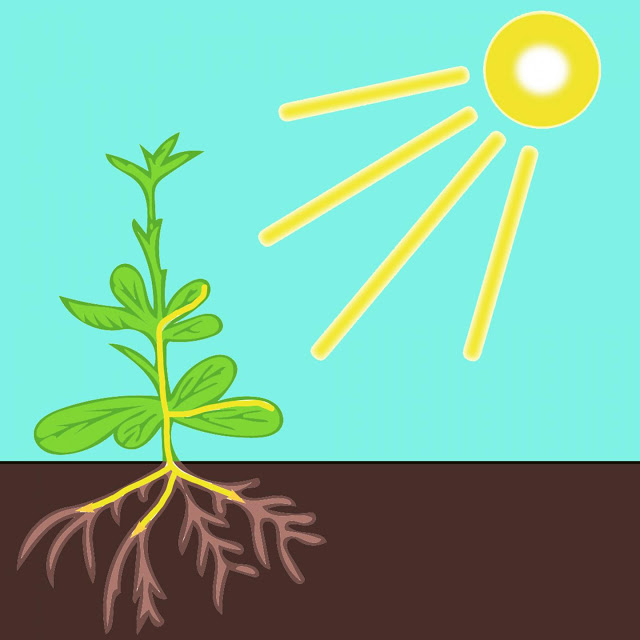

| Online: | |
| Visits: | |
| Stories: |

| Story Views | |
| Now: | |
| Last Hour: | |
| Last 24 Hours: | |
| Total: | |
How Plant Roots in the Dark See Light
Light is first detected by photoreceptors in the shoot of a plant. Physiological processes in the plant are mediated by light signaling molecules. For more than three decades, scientists have been speculating whether roots are also able to perceive light. However, this hypothesis could never be proved until this new study was published.
Photoreceptors in the roots are activated by light which is transmitted from the shoot to the underground roots through the stem

Rakesh Santhanam, Angela Overmeyer / Max Planck Institute for Chemical Ecology.
“These results are crucial for further research projects. Our work proves that roots are able to perceive light, even though they are usually found belowground. Photoreception in the roots triggers a signaling chain which influences plant growth, especially the root architecture,” says Ian Baldwin, leader of the study at the Max Planck Institute for Chemical Ecology in Jena. He already looks into the future: “There are more photoreceptors in the roots. Until now, it has remained largely unknown what their responsibilities in the roots are and how they interact with light signals which are transmitted from the shoots.”
It is of major importance for ecological research to show the relevance of this study for plants growing in their natural habitat. To find out, the scientists want to perform experiments with another plant species, the coyote tobacco Nicotiana attenuata, a model plant in ecology, which is adapted to an extremely strong exposition to light. The researchers propose that the newly found sensory modality of roots is enhancing the ecological performance of plants in nature, by allowing for a better timing of resource allocations for growth, reproduction and defense. [KG/AO]
Contacts and sources:
Prof. Ian T. Baldwin, Max Planck Institute for Chemical Ecology
Prof. Chung-Mo Park, Department of Chemistry, Seoul National University
Citation: Lee, H.-J., Ha, J.-H., Kim, S.-G., Choi, H.-K., Kim, Z. H., Han, Y.-J., Kim, J.-I., Oh, Y., Fragoso, V., Shin, K., Hyeon, T., Choi, H.-G., Oh, K.-H., Baldwin, I. T., Park, C.-M. (2016). Stem-piped light activates phytochrome B to trigger light responses in Arabidopsis thaliana roots. Science Signaling. Vol. 9, Issue 452, pp. ra106 http://dx.doi.org/10.1126/scisignal.aaf6530
Source:


